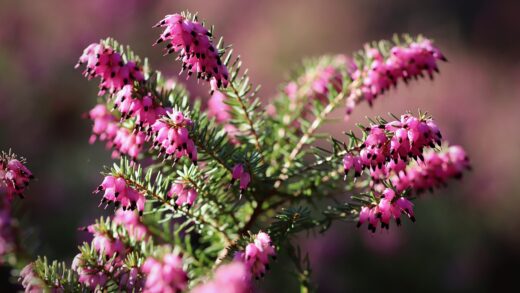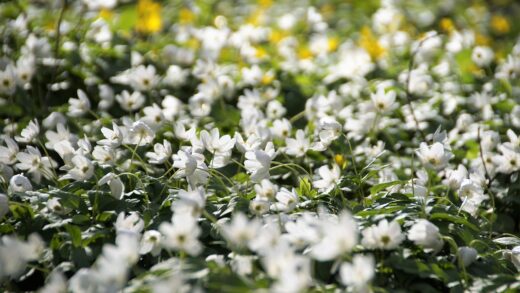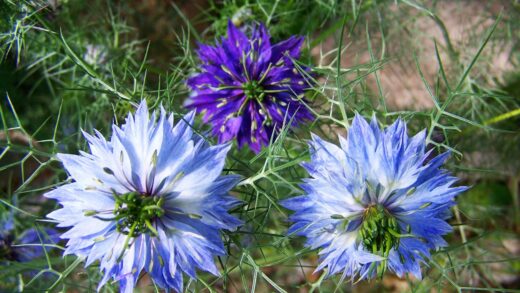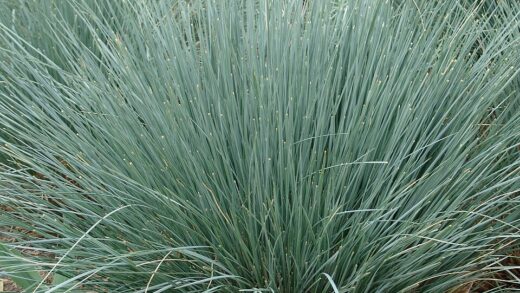Pruning is a vital horticultural practice that, when done correctly and at the right time, can significantly enhance the health, vigor, and aesthetic appeal of your azaleas. It is also one of the most misunderstood aspects of their care, and improper pruning is a frequent cause of diminished flowering. The primary goals of pruning are to maintain a desirable size and shape, remove dead or damaged wood, improve air circulation, and ultimately, encourage the production of a magnificent floral display. The key to success lies in understanding the plant’s growth cycle and recognizing that for azaleas, timing is everything.
The most important principle to grasp is that azaleas bloom on “old wood.” This means the flower buds for the following spring’s display are formed on the branches during the preceding summer and autumn. If you prune the plant in the late summer, fall, or winter, you will be cutting off these developing flower buds, thereby sacrificing most, if not all, of the next season’s blooms. This is the single most critical piece of information regarding azalea pruning and the reason why the timing of this task is so inflexible.
Therefore, the only appropriate time to perform any significant pruning or shaping on your azaleas is within a narrow window of about three to four weeks immediately after they have finished flowering in the spring. This post-bloom period allows you to shape the plant without endangering the next year’s flower show. Pruning at this time also stimulates a flush of new growth, and it is on this new growth that the flower buds for the following year will form over the summer.
Before you make a single cut, it is essential to have a clear objective in mind. Are you trying to control the plant’s size, improve its shape, remove unhealthy branches, or encourage denser growth? The answer to this question will determine the type and extent of the cuts you will make. Always use sharp, clean pruning tools, such as bypass pruners for smaller stems and loppers or a pruning saw for larger branches. Clean tools prevent the spread of disease, and sharp blades make clean cuts that heal more quickly.
The best time for pruning
As has been emphasized, the timing of azalea pruning is paramount and directly linked to the plant’s flowering cycle. The golden rule is to prune within a three- to four-week period right after the last flower has faded in the spring. This timing accomplishes several important things simultaneously. Firstly, you get to enjoy the full floral display before making any cuts. Secondly, by pruning immediately after flowering, you avoid removing the flower buds for the next season, as they have not yet had a chance to form.
More articles on this topic
Pruning at this specific time also aligns perfectly with the plant’s natural growth flush. The cuts you make will stimulate the production of new stems and leaves. This new growth, which develops throughout the summer, is what will carry the flower buds for the following spring. If you wait too long and prune in mid-to-late summer, you not only risk cutting off buds that have already started to develop, but you may also encourage a late flush of growth that will not have time to harden off before winter, making it susceptible to frost damage.
An exception to this strict “after-flowering” rule is the removal of the three ‘D’s: dead, damaged, or diseased wood. These problematic branches can and should be removed at any time of the year you happen to notice them. They are not contributing to the plant’s health and can provide an entry point for pests and diseases. When removing such a branch, be sure to cut it back to a point of healthy, living tissue. You can identify healthy wood by the green cambium layer just under the bark; dead wood will be brown and dry all the way through.
For gardeners who grow Encore azaleas or other reblooming varieties that flower in spring and again in summer or fall, the pruning advice is slightly modified. A light shaping or trimming can be done after the initial spring bloom, just as you would with a traditional azalea. This will encourage new growth and a robust second wave of flowers. After the later flushes of bloom, it is best to avoid any further pruning to ensure a good flower set for the following spring.
Basic pruning techniques
The most common and routine pruning task for azaleas is deadheading. This is the practice of removing the spent flower clusters after they have faded. While not strictly necessary for the plant’s survival, deadheading is highly beneficial. It prevents the plant from expending its energy on producing seeds and instead redirects that energy into developing more vegetative growth and a greater number of flower buds for next year. For trusses of flowers, you can often snap them off carefully with your fingers at the base of the flower cluster. For single flowers or for a cleaner job, use small snips, being very careful not to damage the small, new leaf buds that are typically emerging just below the old flower.
More articles on this topic
For general maintenance and shaping, the goal is to create a more open, yet full, plant with a natural form. Start by looking for any branches that are crossing over each other and rubbing, as this can create wounds. Prune out the weaker or more poorly placed of the two branches. You can also thin out the plant by selectively removing a few branches all the way back to their point of origin on a larger stem. This thinning technique opens up the interior of the shrub to better light and air circulation, which helps to reduce the risk of fungal diseases.
When you need to reduce the height or spread of an azalea, it is best to use thinning cuts rather than shearing the plant like a hedge. Shearing destroys the natural, graceful habit of the azalea and often results in a dense outer layer of foliage that shades out the interior, leading to a hollow-looking plant. Instead, follow individual long branches back into the shrub and cut them at varying lengths. Make your cut just above a leaf or a “latent bud” (a small, dormant bud on the stem) or back to a point where the branch joins another. This method reduces the size of the plant while maintaining its natural form.
Never remove more than one-third of the plant’s total mass in a single year. Over-pruning can be a significant shock to the plant and can weaken it severely. A gradual approach to size reduction or reshaping over two or three years is much healthier for the plant. A light, annual pruning after flowering is a far better practice than a drastic, infrequent butchering. This regular attention will keep the plant healthy, well-shaped, and at a manageable size.
Renewal or rejuvenation pruning
Over time, an old azalea can become overgrown, woody, and sparse, with most of its foliage and flowers concentrated at the very ends of long, bare stems. In these cases, a more drastic approach known as renewal or rejuvenation pruning may be necessary to restore the shrub’s vigor and form. This is a hard pruning technique that should only be performed on healthy, well-established plants that have simply become too large and leggy. It is a stressful process for the plant, so it should not be attempted on a plant that is already struggling with disease or other issues.
There are two primary methods for rejuvenation pruning. The most severe method is to cut the entire plant back to about 6 to 12 inches from the ground. This should be done in late winter or early spring, just before new growth begins. This drastic action will force the plant to send up a multitude of new shoots from its base and root system. You will be sacrificing the flowers for at least one, and possibly two, seasons. As the new shoots grow, you can then selectively thin them to create a well-structured, new framework for the shrub.
A slightly less shocking, and often preferred, method is a gradual renewal over a period of three years. In the first year (again, in late winter/early spring), you remove about one-third of the oldest, thickest canes, cutting them back to the ground or to a low-growing side branch. The following year, you remove another third of the old canes, and in the third year, you remove the remaining old canes. This approach allows the plant to retain some of its foliage and flowering capacity throughout the process, making it less of a visual shock in the landscape.
After any form of rejuvenation pruning, the plant will require diligent care to help it recover. Ensure that it is well-watered, especially during its first season of regrowth. Applying a balanced, acid-forming fertilizer after the pruning can provide the nutrients needed to fuel the new growth. Monitor the plant closely for any signs of stress and be patient. It will take a few years, but this process can transform an old, tired azalea back into a lush, full, and productive shrub.
Pruning for specific purposes
Sometimes, pruning is not just about general health or size, but is needed to address a specific problem or achieve a particular goal. For example, if you notice a branch that has died back, it is important to prune it out immediately. You must cut well back into healthy, green wood to ensure you have removed all of the affected tissue. This is a key practice for managing diseases like Botryosphaeria dieback. Always remember to sterilize your pruning tool with rubbing alcohol after cutting out diseased wood.
Pruning can also be used to create specific plant forms, such as a “tree-form” azalea or a standard. This is an advanced technique that is best started with a young plant. It involves selecting a single, strong, straight central stem to act as the “trunk” and gradually removing all the lower branches over time, while allowing the top of the plant to form a full, rounded canopy. This requires consistent and careful pruning over several years to achieve and maintain the desired shape.
In areas prone to heavy, wet snow, you might consider preventative pruning to reduce the risk of branch damage. By selectively thinning out the canopy after flowering, you can create a less dense structure that is less likely to catch and hold large amounts of snow. You can also shorten particularly long, horizontal branches that would be under significant stress from a heavy snow load. This proactive approach can prevent the heartbreaking sight of split and broken branches after a winter storm.
Finally, pruning can be used to manage the size and shape of azaleas that are grown as a hedge or a mass planting. Even in this case, it is still preferable to use selective thinning cuts on individual plants rather than shearing the entire hedge with electric shears. While it is more time-consuming, this method results in a healthier hedge that is not just a wall of green on the outside, but is full and leafy throughout. It also allows for much better flower production compared to a formally sheared hedge.


















